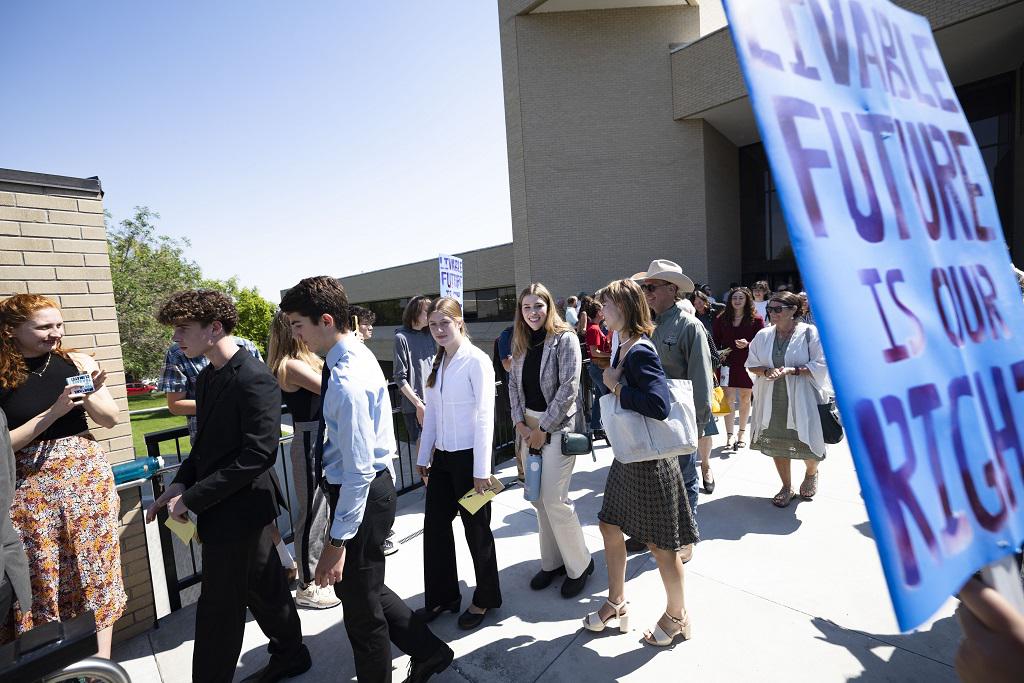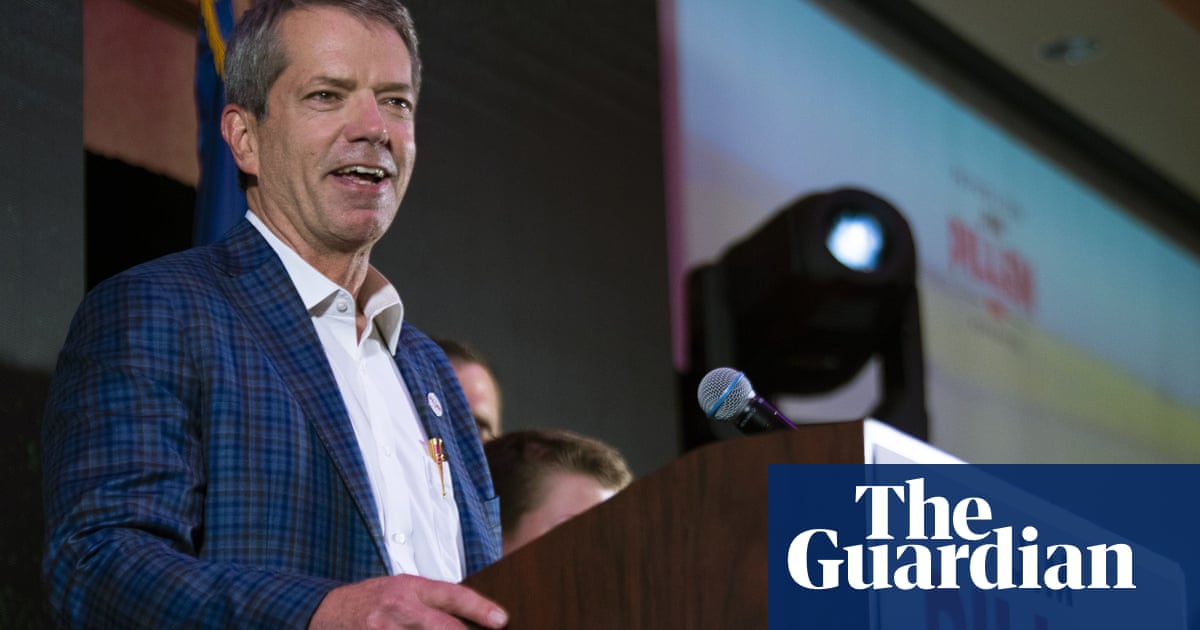Politics
Nebraska Gov. Jim Pillen hospitalized after he was bucked off a horse
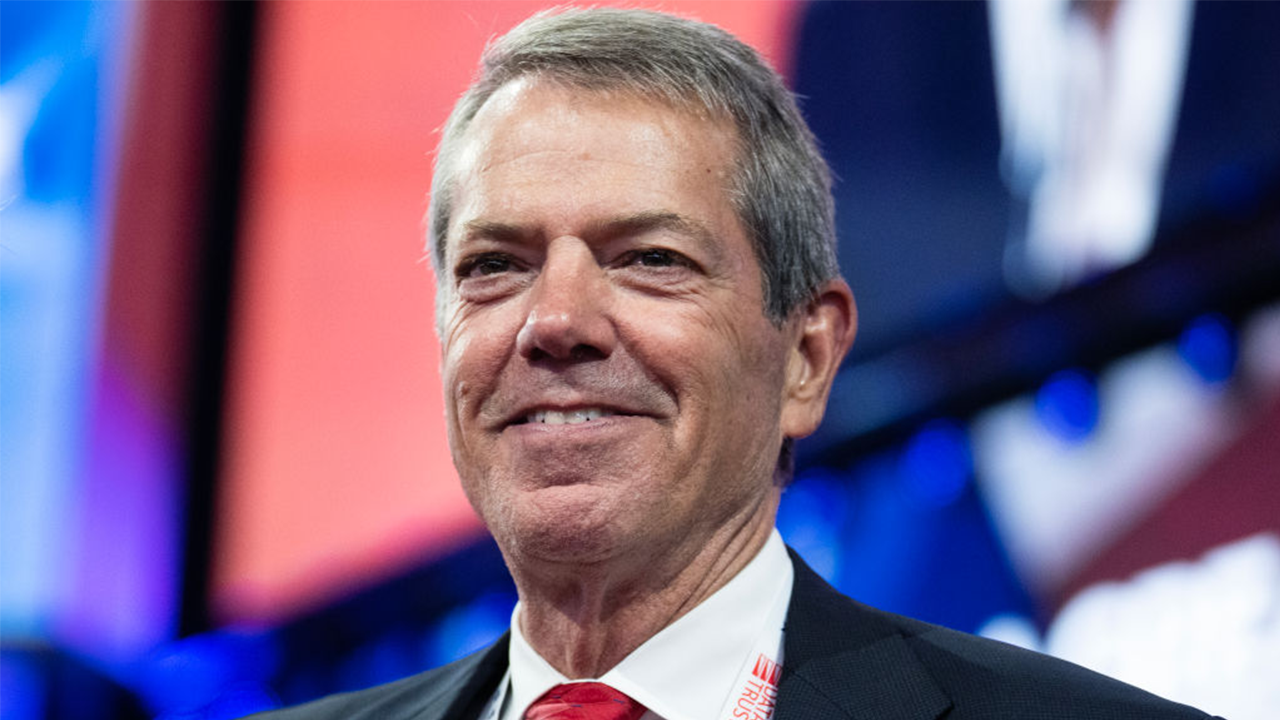
Nebraska’s Republican Gov. Jim Pillen was injured and transported to a hospital on Sunday after he was bucked off a horse.
Pillen, 68, is expected to be hospitalized for several days.
The first-term governor was riding horses with his family when he was thrown off a new horse and suffered injuries, according to the governor’s office.
ILLEGAL MIGRANTS IN NEBRASKA TOWN BRINGING ‘STRESS’ TO SCHOOLS, PUBLIC SAFETY
Nebraska Gov. Jim Pillen was injured on Sunday after he was bucked off a horse while riding with his family. (Kenneth Ferriera/Lincoln Journal Star via AP, File)
Pillen was rushed to Columbus Community Hospital in Columbus, Nebraska, before he was transported, out of an abundance of caution, to the University of Nebraska Medical Center in Omaha.
“The Governor is alert and is in continuous touch with his team,” Pillen’s office said.
DRONE MISHAP DURING ORLANDO HOLIDAY AERIAL SHOW SENDS CHILD TO HOSPITAL
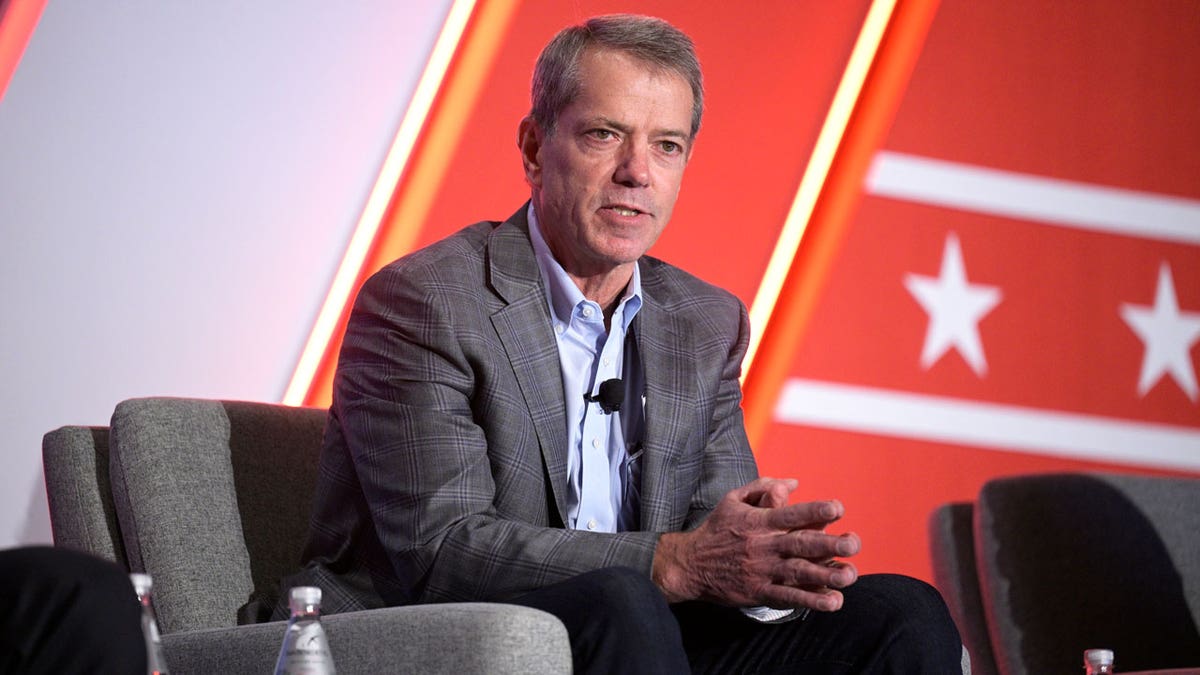
Gov. Pillen is expected to be hospitalized for several days, though the severity of his injuries was not revealed. (AP Photo/Phelan M. Ebenhack, File)
Pillen’s office did not detail what injuries he suffered or the severity.
The GOP governor was elected in 2022, running in the gubernatorial election that year because former Gov. Pete Ricketts, also a Republican, was term-limited.
Pillen then appointed Ricketts to the U.S. Senate to fill the seat vacated by former Republican Sen. Ben Sasse, who resigned in 2023 to become president of the University of Florida. Sasse has since stepped down as the university’s president.
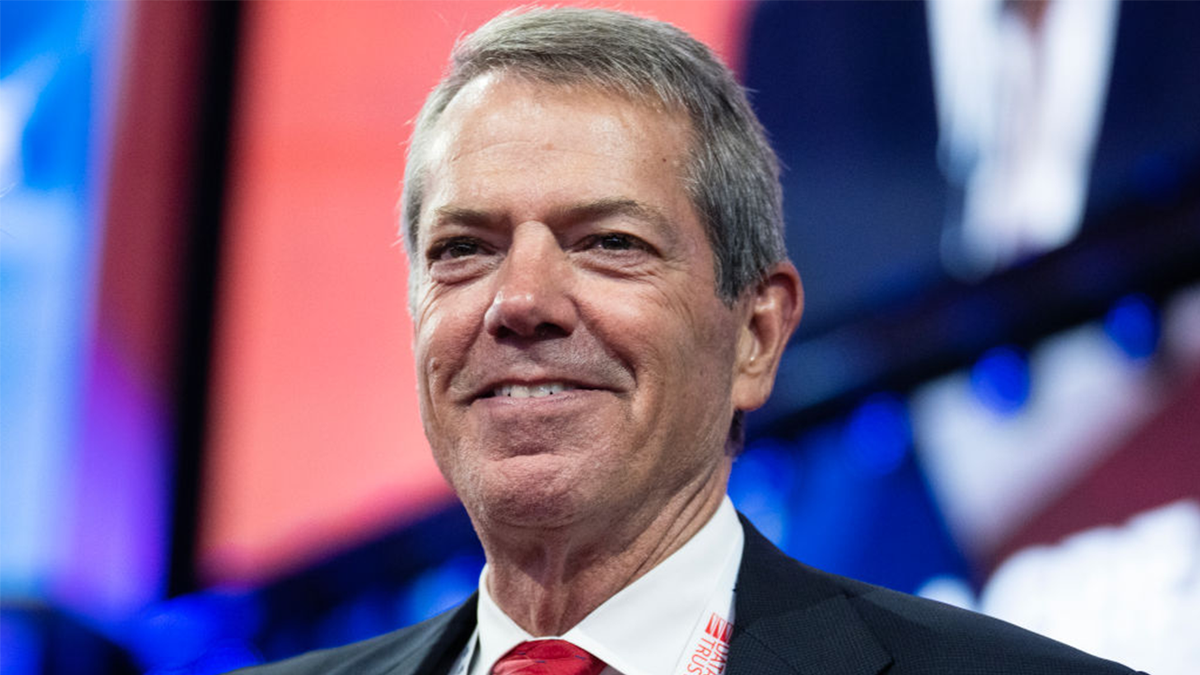
Pillen was elected as Nebraska’s governor in 2022. (Getty Images)
Pillen worked as a veterinarian and owned a livestock operation before he was elected as governor.
The Associated Press contributed to this report.

Politics
Opinion: Drain the swamp? More like overt, unapologetic swampy displays at Mar-a-Lago

Donald Trump doesn’t drain the swamp, despite his promises. He just puts his own brand on it, like everything else he touches, and sells. And he transports it: Wherever Trump is, the swamp creatures swarm to be near him.
Since he won the election Nov. 5, the habitat for hangers-on has been Mar-a-Lago, Trump’s waterfront Palm Beach playground in Florida, a state famously hospitable to swamps. Sycophants, billionaires, lobbyists and job seekers jostle amid the unswamplike gaudy gilt splendor, wearing golf attire by day and formal wear by night, in hopes of a chance to press their special interests before the Swamp King.
Opinion Columnist
Jackie Calmes
Jackie Calmes brings a critical eye to the national political scene. She has decades of experience covering the White House and Congress.
Postelection headlines tell the tale. “Inside the Trump-Fueled Lobbying Frenzy from Mar-a-Lago” read one, followed by, “K Street lobbyists are flocking to Florida, as the nexus of power under Donald Trump shifts from Washington to Palm Beach.” Another: “A Spike in Demand, and Fees, for Lobbyists with Ties to Trump.” And from the BBC: “Power in the Palms: Inside the pilgrimage to Mar-a-Lago.”
Not in memory, possibly not ever, has the nation seen such overt, unapologetic and public displays of kowtowing to, and deal-making with, a U.S. president or president-elect by the nation’s rich and well-connected. Get used to it. Trump’s favorite historical period is the late 19th century Gilded Age; he’s re-creating it for the 21st century.
Yet another recent article on the Trump transition, headlined “Dinner at Mar-a-Lago Is for Power Games,” noted that when Trump enters the patio dining room nightly, the assembled guests give him a standing ovation. At a center table, circled by rope to keep lesser beings at bay, the president-elect doubles as DJ, queuing up songs on his iPad — including David Bowie’s “Space Oddity” when the world’s richest man, EV innovator, rocket entrepreneur and ubiquitous “First Buddy” Elon Musk, arrives to join Trump in the center ring.
Trump “sits right out there with everybody,” a wealthy Pennsylvanian who’s a Mar-a-Lago member ($1 million upfront, $20,000 annually) told the Washington Post. “It’s a more sophisticated swamp, but it’s crazy,” another habitue said. “You go to the club and run into all these creatures.” A third member, however, griped that so many supplicants crowd the place these days that he sometimes can’t get a table.
But on Thursday evening the waters there parted for Trump’s special guest, the world’s second-richest man, Jeff Bezos, owner of Amazon, aerospace company Blue Origin (a Musk competitor) and the Washington Post — all enterprises that could be helped or hurt by Trump administration actions. Bezos is among the tech CEOs whose companies have donated $1 million for Trump’s inauguration festivities, having never done so for past inaugurals. Also at the center-stage table, natch, was Bezos frenemy Musk.
Besides Trump himself — with his cryptocurrency business, majority stake in the social media network Truth Social, real estate properties, books, licensing deals, stock holdings in multiple industries and new MAGA-branded merch by the day — Musk may be the person with the most to gain from the coming administration, and the most real and apparent conflicts of interest in mixing business and government work. Musk has already seen a hefty return on his quarter-billion-dollar investment in getting Trump elected, a jaw-dropping figure but one that represents just 0.05% of his fortune, which Bloomberg’s Billionaire Index puts at nearly a half-trillion dollars, $474 billion.
Musk hasn’t had to wait for Trump to take office to benefit. Flaunting his influence as co-chief of Trump’s not-really-a-department Department of Government Efficiency with Vivek Ramaswamy (another billionaire, barely, according to Forbes), Musk last week killed a bipartisan year-end spending package with a fusillade of more than 150 social media attacks on X — beating Trump to the punch. And down with the bill went its provisions to restrict investments in China that could have limited those that Musk is pursuing.
Just days before, on Monday, Democratic Sen. Elizabeth Warren of Massachusetts had written to Trump calling for safeguards against Musk’s conflicts of interest as he exercises Trump’s mandate to recommend ways to slash both federal spending and regulations. For someone like Musk with many billions’ worth of federal contracts to proceed without guardrails, Warren said, was “an invitation for corruption on a scale not seen in our lifetimes.”
That phrase could apply to the entire culture that Trump is building around himself for his second term. For years in Washington, influence–peddling almost to the point of bribery has in effect become legalized, thanks largely to a string of Supreme Court decisions making prosecutions more difficult and money-giving easier. Both parties take full advantage of the lax environment, but no one more brazenly than Trump.
Suffice it to say that in the Trump swamp, Warren’s pitch for protections against Musk’s personal aggrandizement wasn’t taken seriously. After all, the boss himself is resisting federal ethics constraints that bound other modern presidents; his team belatedly submitted an ethics code as required by the Presidential Transition Act, but didn’t apply the requirements to Trump, according to the nonpartisan Campaign Legal Center. Team Trump’s dismissive response to Warren came from Trump’s transition spokeswoman, who denigrated the senator as “Pocahontas,” echoing Trump’s schoolyard taunt.
The president-elect’s own take on the potential for Musk’s self-dealing wasn’t any more reassuring when Time raised the issue in its interview after it designated him the magazine’s “Person of the Year.”
One of the interviewers, noting that Musk will be overseeing federal agencies that regulate his companies, which include SpaceX, Tesla, X, Starlink, brain-implant company Neuralink and more, asked, “Isn’t that a conflict of interest?” Trump: “I don’t think so.” The questioner followed up, pointing out that Musk has been talking about cuts to NASA and SpaceX is a competitor. “Isn’t that the textbook definition of a conflict of interest?”
Trump deflected: “He puts the country before … his company.”
As Trump likes to say, “We’ll see.”
@jackiekcalmes
Politics
Trump names several new White House picks to work on AI, crypto and more: 'America First Patriots'
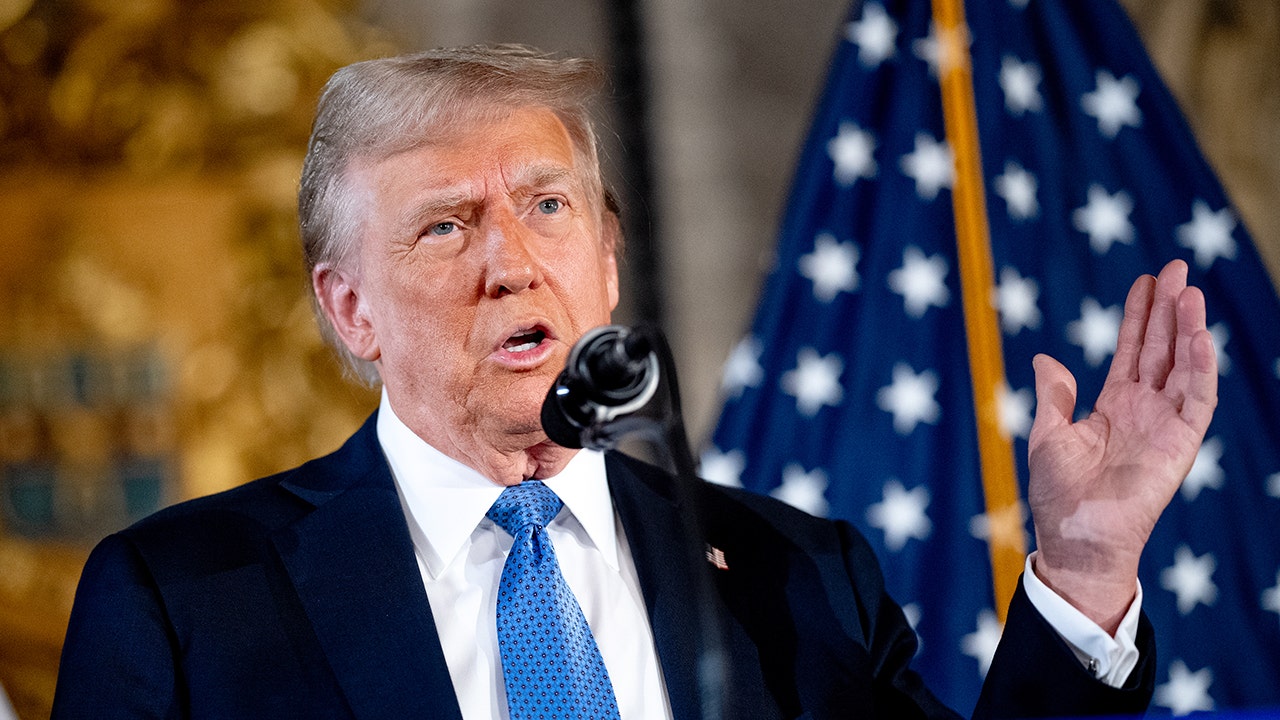
President-elect Donald Trump unleashed a slew of nominations on Sunday night, naming several new people to serve in his forthcoming administration.
In several Truth Social posts on Sunday, Trump introduced various experts to work in the White House on issues ranging from defense to technology to budgeting. The Republican leader began by naming Stephen Alexander Vaden as his nominee for deputy secretary of the Department of Agriculture.
“In my First Term, Stephen was the General Counsel of the Department of Agriculture, and a Member of the Board of the Commodity Credit Corporation, where he won two cases before the United States Supreme Court, relocated and reorganized the Agencies that comprise the Department to better serve Rural America, and engaged in substantial regulatory reform,” Trump wrote in a post.
“Stephen joined the USDA on Day One of my First Term, and left in December 2020 after I nominated him, and the U.S. Senate confirmed him, to continue to serve the American People as an Article III Judge on the Court of International Trade,” he added. “Judge Stephen Vaden resides in Union City, Tennessee, where he helps manage his family farm. Congratulations Stephen!”
TRUMP NOMINATES PAIR TO HELP LEAD DOJ, ANNOUNCES FEDERAL RAILROAD ADMINISTRATION PICK
President-elect Donald Trump speaks at a news conference at Trump’s Mar-a-Lago resort on December 16, 2024 in Palm Beach, Florida. (Andrew Harnik/Getty Images)
Trump followed up his first post by naming a “slate of America First Patriots” to work with Pete Hegseth, his nominee for secretary of defense and a former “Fox & Friends Weekend” co-host. Trump nominated Stephen Feinberg as the next deputy secretary of defense, and said Feinberg would “Help Make the Pentagon Great Again.”
“An extremely successful businessman, Stephen is a Princeton graduate, who founded his company, Cerberus, in 1992,” Trump wrote. “In addition to his leadership at Cerberus, from 2018 to January 2021, Stephen served as Chairman of my Intelligence Advisory Board.”
The president-elect went on to name Elbridge “Bridge” Colby as his pick for under secretary of defense for policy.
“A highly respected advocate for our America First foreign and defense policy, Bridge will work closely with my outstanding Secretary of Defense Nominee, Pete Hegseth, to restore our Military power, and achieve my policy of PEACE THROUGH STRENGTH,” Trump said, noting that Colby graduated from Harvard University and Yale Law School.
“Bridge served with distinction in the Pentagon in my First Term, leading the effort on my landmark 2018 Defense strategy…and will make an excellent addition to my team, who will, Make America Great Again!”
Trump then named Michael Duffey and Emil Michael as his picks for under secretary of defense for acquisition and sustainment, and undersecretary of defense for research and engineering, respectively.
“Mike will drive change at the Pentagon and, as a staunch proponent of an America First approach to our National Defense, will work to revitalize our Defense Industrial Base, and rebuild our Military,” Trump said of Duffey.
Trump added that Emil Michael would “ensure that our Military has the most technologically sophisticated weapons in the World, while saving A LOT of money for our Taxpayers.”
GET TO KNOW DONALD TRUMP’S CABINET: WHO HAS THE PRESIDENT-ELECT PICKED SO FAR?
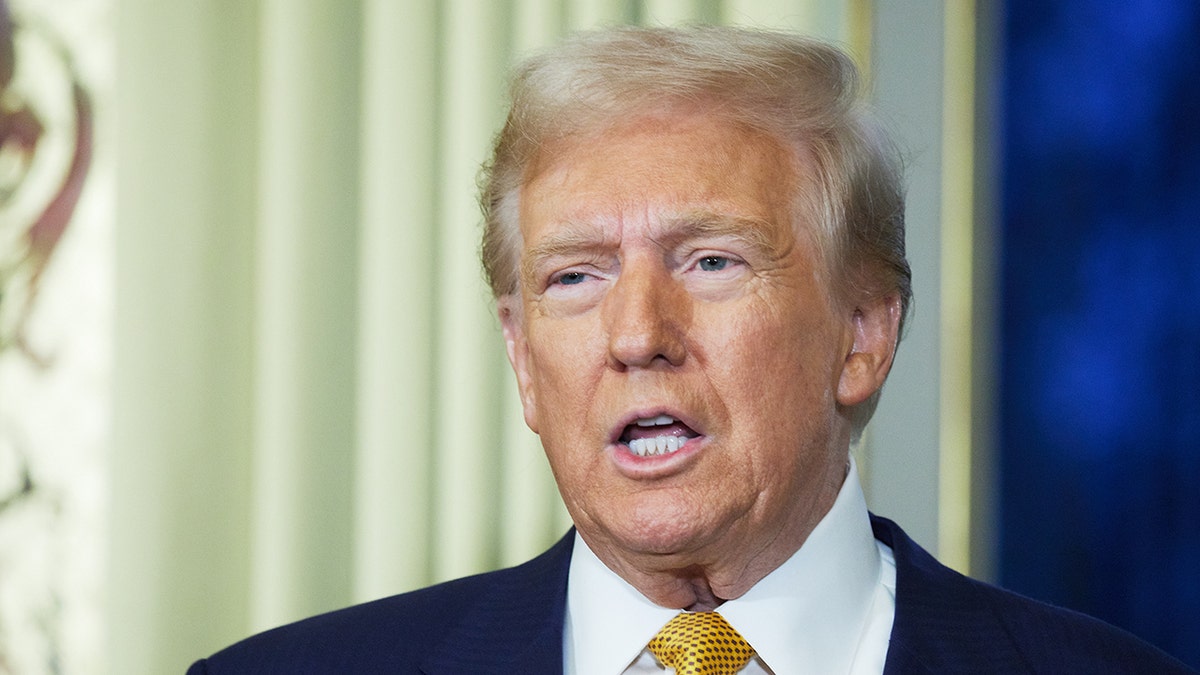
President-elect Donald Trump revealed several picks for his second administration on Sunday. (Oleg Nikishin/Getty Images)
“Emil is a graduate of Harvard University, and has a Law degree from Stanford,” Trump wrote. “He is a one of the most respected leaders in the Tech business, and will be a champion for the Troops, and our Great Country.”
For his next defense-related picks, Trump announced Keith Bass as his nominee for assistant secretary of defense for health affairs, and that Joe Kasper would serve as chief of staff for the secretary of defense. Kasper worked in the first Trump administration in support roles, in addition to Capitol Hill.
Bass, a retired Navy commander, would be “leading the charge to ensure our Troops are healthy, and receiving the best Medical Care possible,” Trump said.
Next, Trump announced Scott Kupor as his pick for the director of the Office of Personnel Management. Trump noted that Kupor was the first employee at Andreessen Horowitz, a venture capital firm where he is now a managing partner.
“Scott will bring much needed reform to our federal workforce. Scott graduated Phi Beta Kappa from Stanford University, with a bachelor’s degree in Public Policy,” Trump wrote. “He also holds a Law degree, with distinction, from Stanford University. Congratulations Scott!”
In his final bundle of nominations, the Republican president-elect announced his picks for tech-related roles. Trump began by naming Michael J.K. Kratsios as his new director of the White House Office of Science and Technology Policy.
Kratsios, who will also serve as an assistant to the president for science and technology, holds a degree from Princeton University. Trump noted that he previously served as an under secretary of defense for research & engineering at the Pentagon, among other roles.
LAWMAKERS REACT TO STOPGAP FUNDING AND AVERTING GOVERNMENT SHUTDOWN
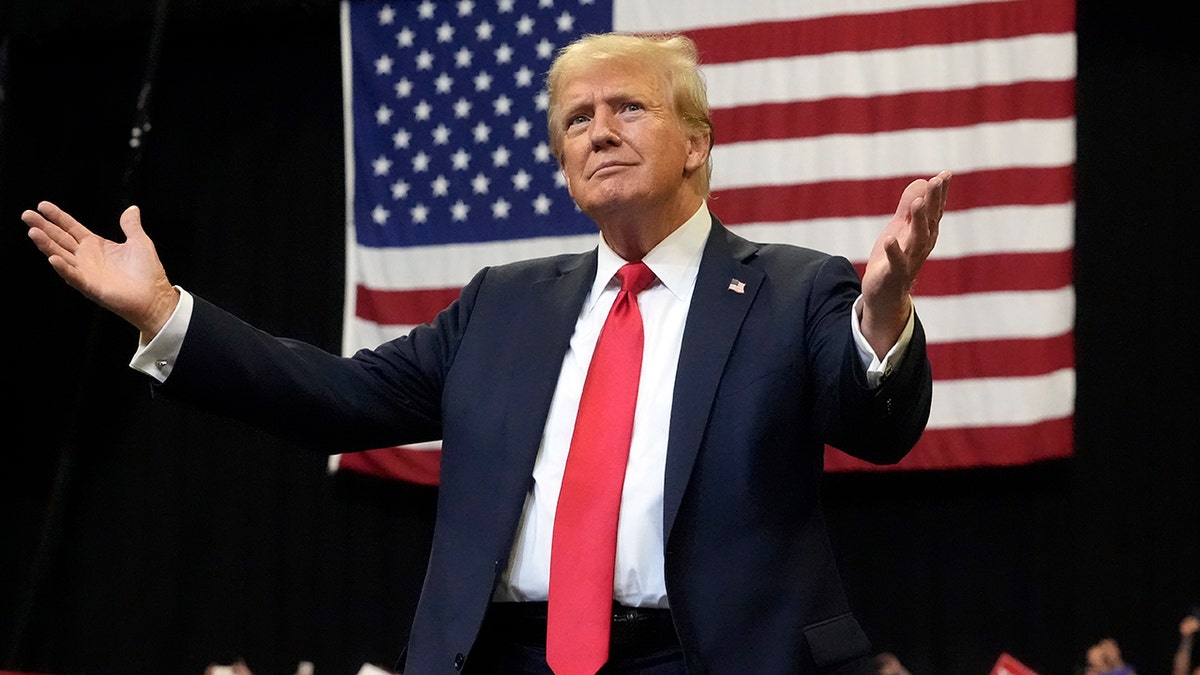
Former President Trump arrives to speak at a campaign rally in Bozeman, Montana, on Friday, Aug. 9. (AP/Rick Bowmer)
Trump added that Dr. Lynne Parker will serve as executive director of the President’s Council of Advisors on Science and Technology, and counselor to the director of the White House Office of Science and Technology Policy.
“Dr. Parker previously served as Deputy U.S. CTO, and Founding Director of the National Artificial Intelligence Initiative Office,” Trump said. “She received her PhD in Computer Science from MIT.”
Trump’s last two picks were Bo Hines and Sriram Krishnan. Hines will be the executive director of the Presidential Council of Advisers for Digital Assets, which Trump described as a “a new advisory group composed of luminaries from the Crypto industry.”
“In his new role, Bo will work with David to foster innovation and growth in the digital assets space, while ensuring industry leaders have the resources they need to succeed,” Trump wrote, adding that Krishnan will serve as senior policy advisor for artificial intelligence at the White House Office of Science and Technology Policy.
CLICK TO GET THE FOX NEWS APP
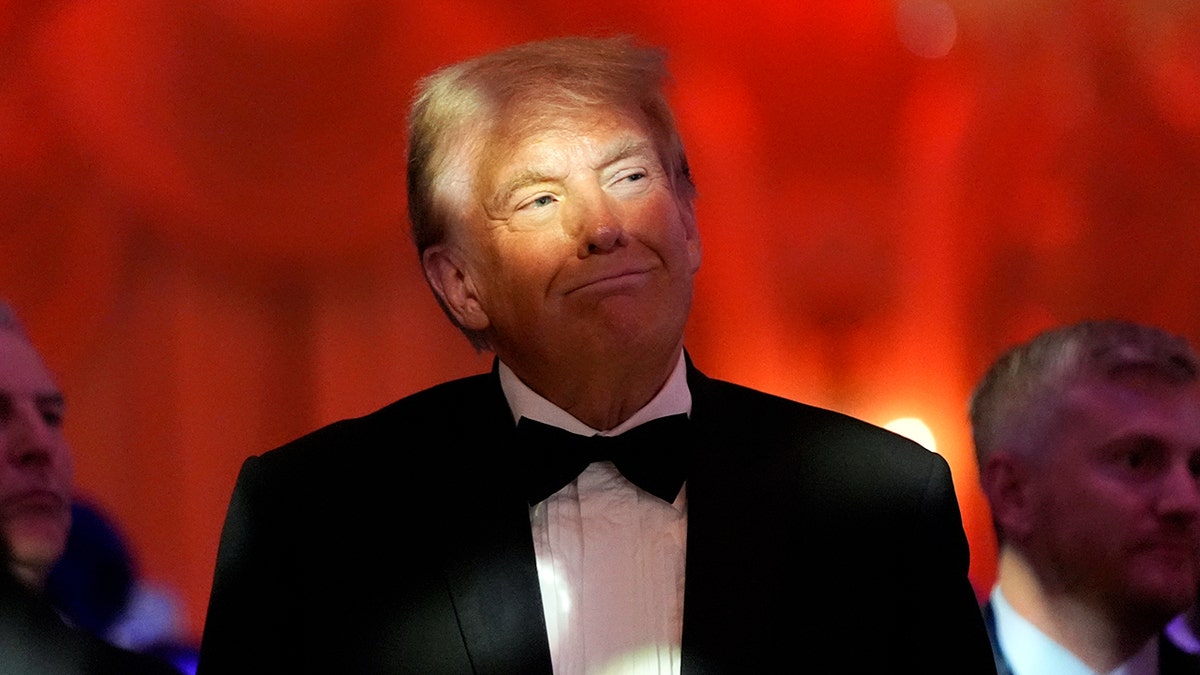
President-elect Donald Trump listens during an America First Policy Institute gala at his Mar-a-Lago estate, Thursday, Nov. 14, 2024, in Palm Beach, Fla. (AP Photo/Alex Brandon)
“Working closely with David Sacks, Sriram will focus on ensuring continued American leadership in A.I., and help shape and coordinate A.I. policy across Government, including working with the President’s Council of Advisors on Science and Technology,” Trump wrote. “Sriram started his career at Microsoft as a founding member of Windows Azure.”
Politics
Column: Newsom is acting more like a governor should. Will that boost his White House prospects?
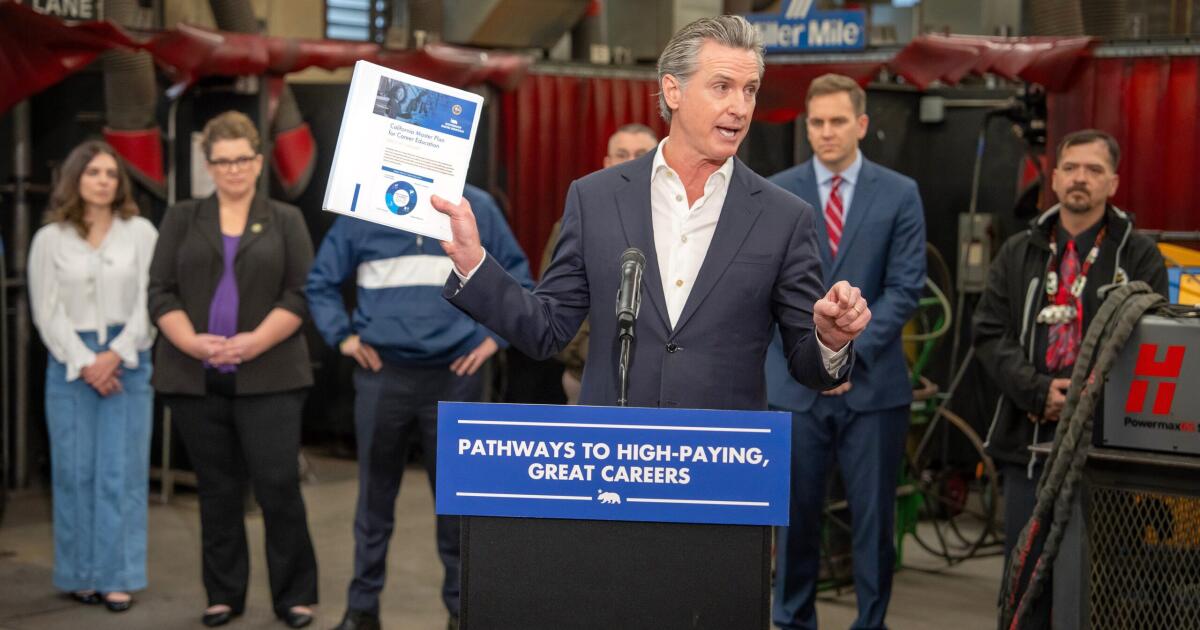
For a good deal of this election cycle, Gavin Newsom acted very much like a person wanting to be president.
He traveled the country and ran TV ads. He raised billboards and debated Florida’s Republican governor on national TV, just a few weeks before Ron DeSantis’ campaign crumpled in a humiliating heap.
The not-really campaign was never an actual, serious run for the White House. First Joe Biden and then (o, bitter pill!) his sometime friend, sometime rival Kamala Harris stood in Newsom’s way. It was more like California’s restive governor was letting his ego loose for a bit of an off-leash romp.
Things changed after Nov. 5, following Donald Trump’s triumph and California’s notable shift toward the center-right on election day. Suddenly, Newsom started appearing in places such as Bakersfield, Redding and Colusa, among the ruddiest parts of red California.
It’s something the governor should have done a long time ago, rather than strutting and preening on the national stage. There are millions of Californians — politically outnumbered, geographically far-flung — who have long felt derided or ignored by Sacramento.
But give credit where due. Newsom is showing up.
And if he’s interested in really, truly running for president in 2028 — when the Democratic contest looks to be a wide-open affair — it’s not a bad place to start.
The program Newsom has been pitching of late, the “Jobs First Economic Blueprint,” has been in the works for some time.
In promotional materials, the governor’s office describes the program as a “bottom-up strategy for creating good-paying jobs and regional economic development.” The plan follows lengthy consultation with locals in 13 parts of the state and aims to streamline programs and spur economic growth through a series of tailor-made initiatives.
The unveiling in the red reaches of California was no accident.
With Trump’s victory, Democrats have begun to reckon ever more seriously with their diminished standing among union members and working-class voters and the party’s catastrophic collapse — decades in the making — across rural America. There’s a new urgency “to solve problems and meet people where they are,” as David McCuan, a Sonoma State political science professor and longtime student of state politics, put it.
In California, that means venturing beyond the politically comfortable climes of Los Angeles and the San Francisco Bay Area into the hostile interior, and extending what Newsom described during a recent appearance in Redding as “an open hand, not a closed fist.” (The event at Shasta College, unveiling a plan to create better job opportunities for those without college degrees, even drew the rare presence of a GOP lawmaker, local Assemblywoman Heather Hadwick.)
It’s exactly what the governor should be doing. Seeing and being seen in red California sends a message to fellow Democrats as they puzzle out a way forward. More importantly, it tells those living outside the state’s big cities and sprawling suburbs they matter and their cares aren’t being overlooked.
Those close to the governor say Newsom is in a much better place now than the pouty, sulky space he occupied in the months after President Biden stepped aside and anointed Harris as his successor.
It’s not just the sidelining — for the time being anyway — of the vice president, who clearly bested Newsom in their unspoken, years-long competition. There is also a renewed sense of purpose with Trump returning to the White House and California poised to emerge, once more, at the vanguard of the political opposition, with Newsom in the lead.
No one, perhaps not even the governor himself, knows whether he will attempt a genuine, full-fledged try for the White House in 2028. But there are things he can do in the meantime to better position himself if he decides to do so.
Chief among them is ending his term a little over two years from now with a sheen of success. And that means spending more time in places like Ione and Newcastle than Iowa and New Hampshire. (You can find those tiny towns in Amador and Placer counties, respectively.)
There may be no small element of fantasy in the talk of Newsom as a serious presidential contender.
Having just lost the White House with one San Francisco-incubated nominee atop their ticket, it seems quite unlikely that Democrats will turn to Newsom, another of that ilk, to be the party’s savior four years hence.
But who knows? With a twice-impeached convicted felon preparing to take the presidential oath for a second time, it’s impossible to rule anything out.
Newsom’s red-state rambles may end up having no effect whatsoever on his political future.
But they can’t hurt.
-

 Politics1 week ago
Politics1 week agoCanadian premier threatens to cut off energy imports to US if Trump imposes tariff on country
-
/cdn.vox-cdn.com/uploads/chorus_asset/file/25789444/1258459915.jpg)
/cdn.vox-cdn.com/uploads/chorus_asset/file/25789444/1258459915.jpg) Technology1 week ago
Technology1 week agoOpenAI cofounder Ilya Sutskever says the way AI is built is about to change
-

 Politics1 week ago
Politics1 week agoU.S. Supreme Court will decide if oil industry may sue to block California's zero-emissions goal
-
/cdn.vox-cdn.com/uploads/chorus_asset/file/25546252/STK169_Mark_Zuckerburg_CVIRGINIA_D.jpg)
/cdn.vox-cdn.com/uploads/chorus_asset/file/25546252/STK169_Mark_Zuckerburg_CVIRGINIA_D.jpg) Technology1 week ago
Technology1 week agoMeta asks the US government to block OpenAI’s switch to a for-profit
-

 Business1 week ago
Business1 week agoFreddie Freeman's World Series walk-off grand slam baseball sells at auction for $1.56 million
-
/cdn.vox-cdn.com/uploads/chorus_asset/file/23951353/STK043_VRG_Illo_N_Barclay_3_Meta.jpg)
/cdn.vox-cdn.com/uploads/chorus_asset/file/23951353/STK043_VRG_Illo_N_Barclay_3_Meta.jpg) Technology1 week ago
Technology1 week agoMeta’s Instagram boss: who posted something matters more in the AI age
-
News1 week ago
East’s wintry mix could make travel dicey. And yes, that was a tornado in Calif.
-
/cdn.vox-cdn.com/uploads/chorus_asset/file/24924653/236780_Google_AntiTrust_Trial_Custom_Art_CVirginia__0003_1.png)
/cdn.vox-cdn.com/uploads/chorus_asset/file/24924653/236780_Google_AntiTrust_Trial_Custom_Art_CVirginia__0003_1.png) Technology2 days ago
Technology2 days agoGoogle’s counteroffer to the government trying to break it up is unbundling Android apps



